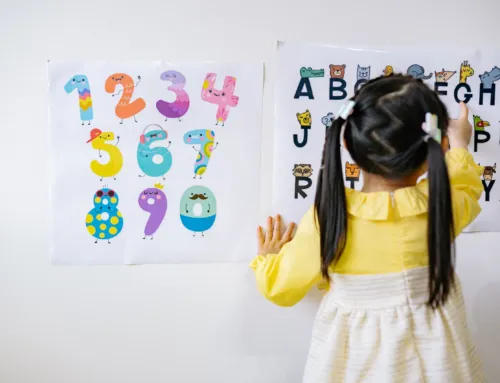Each step in a child’s speech and language development is a milestone, and there are lots of ways you can help them along the way! By incorporating different activities into your daily routine, you can create an environment that nurtures your child’s communication development. Here are some practical (and fun) activities to support your child’s speech and language development at home:
1. Be a narrator for your day
Why:
Children learn by listening to language, so narrating your actions can help them to learn new words and concepts.
How:
As you go about daily tasks, describe what you’re doing: “Now we’re sitting in the car,” or “Look, the dog is running fast!”
2. Sing nursery rhymes and songs
Why:
For toddlers, songs and nursery rhymes help build important skills for talking, like rhythm, intonation, pronunciation, and memory.
How:
Sing songs to your child with repetitive phrases or rhymes like “Twinkle, Twinkle, Little Star,” or “The Wheels on the Bus”. When your child becomes familiar with a song, leave out words for them to fill in the blanks.
3. Read books together
Why:
Reading books together helps children understand language structure, new vocabulary, improves listening skills, and develops important early literacy skills.
How:
Point to pictures in the books and name them. For younger children (ages 3-4), ask questions about what they see: “Can you point to the cat?” or “Which one do we use for cooking?”. For older children (ages 4-5), ask questions that require them to think further: “What might happen next?” or “Why did the little boy do that?”.
4. Cook together
Why:
Cooking can build many different language skills. One of these is sequencing and storytelling, as cooking has many steps, involving your child can help them practice organizing and sequencing their thoughts.
How:
Talk through each step of the cooking process with your child, helping them understand and order the steps. “First, we add the flour. Then we add the milk. Next, we stir them together.”
5. Obstacle course action
Why:
Action words, or verbs, are important for developing children’s ability to make sentences and describe what is happening around them. Obstacle courses also help children practice their listening skills, as well as moving their bodies.
How:
Set up a simple obstacle course using pillows, chairs, or other furniture. Give verbal instructions such as, “Crawl under the table,” or “Jump over the pillows.” Describe what your child is doing: “You’re crawling under the table,” or “You’re jumping over the pillows.”
6. Use your imagination
Why:
Pretend play encourages language use and creativity. It also helps children develop storytelling and problem-solving skills.
How:
You can use anything to create imaginative scenarios! Use your child’s favourite toys and role-play different scenarios. For example, going to the doctor, going on a spaceship, or going to a tea party.
7. Make a mystery box
Why:
Mystery boxes encourage children to use lots of different language to describe objects, build their vocabulary, and practice different sentence structures.
How:
Make a mystery box with items of different shapes, sizes, and textures. Encourage your child to feel items in the box without peeking. They can guess what might be inside by describing the items: “It feels squishy!” or “It’s bumpy!”. You can describe the items and model language to your child, for example “It feels small and round. It’s a marble!”
8. Create opportunities to chat
Why:
Having consistent opportunities to talk encourages your child to communicate more and begin to understand how to have conversations.
How:
Set up specific times each day to have “chat time,” such as at the dinner table, during bath time, or before bed. If your child isn’t engaging in conversations just yet, modelling how to is just as powerful!
9. Play with sensory activities
Why:
Sensory activities provide opportunities for children to explore and talk about different textures, smells, and sensations.
How:
Let your child play with playdough, water, sand, or paints. While they explore, talk about how it feels: “It’s soft,” “It’s sticky,” or “It’s wet!”
10. Hunt for sounds
Why:
Sound hunts help build important early reading skills, promote new vocabulary, and encourage problem-solving skills.
How:
Hide objects around the house that start with different sounds. For example, you could hide a ball for the /b/ sound, or a toy car for the /k/ sound. Give them a map or clues to follow to make it fun!





If you have concerns about your child’s speech and language development, or you’re not sure what’s typical for their age, our Beam Speech team are here to help. We work with children, young people and families to build communication skills in fun, supportive ways. Get in touch to learn more or book an appointment.

Emily Dickason
Speech Pathologist,
Beam Health







